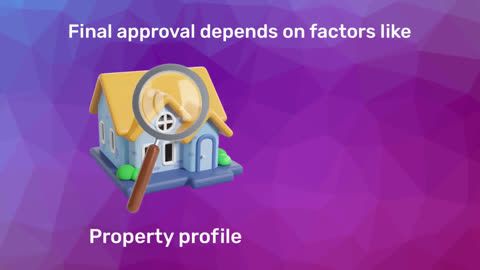If you own land or plan to buy property in Rajasthan, understanding the Jamabandi system is essential. Whether you are a first-time buyer or someone involved in property transactions, knowing the details of Jamabandi Rajasthan ensures that your property dealings are secure and transparent.
What is Jamabandi Rajasthan?
Jamabandi is the official record of rights concerning land. It contains crucial information about land ownership, tenancy, cultivation, and revenue details for a specific piece of land. Essentially, it's a documented proof of who owns a particular parcel of land. The government of Rajasthan maintains this system to make land records accessible to citizens and ensure transparency in land dealings.
Key components of Jamabandi Rajasthan
The Jamabandi document contains several important sections that provide a comprehensive view of a land plot's status:
- Owner's name: The name(s) of the landowner(s) are mentioned along with details of any co-owners.
- Details of cultivators: If the land is used for cultivation, information about the tenants working on it is also included.
- Land description: It includes measurements and details such as the plot number, type of land (agricultural or non-agricultural), and any legal or physical changes to the land.
- Revenue information: This part records details about the land revenue payable to the government.
- Mutation entries: Changes in ownership, usually as a result of sale, inheritance, or gift, are updated in the Jamabandi.
How to access Jamabandi records in Rajasthan?
The Rajasthan government has made it easier for citizens to access land records through an online portal known as Apna Khata. This portal simplifies the process of retrieving land information, including Jamabandi records, without the need to visit government offices.
Here’s how you can access your Jamabandi Rajasthan record online:
1. Visit the Apna Khata portal: Go to the official website: Apna Khata Rajasthan.
2. Select your district: Choose the relevant district where the land is located.
3. Enter land details: Input the required details such as the district, village, and land plot number or Khata number.
4. View Jamabandi: Once the details are entered, the Jamabandi record will be displayed on the screen.
This online accessibility ensures that you can verify land ownership before making any property-related decisions, including applying for a home loan.
Step-by-step process to get Jamabandi Nakal
Follow these steps to get a copy (Nakal) of your Jamabandi record online:
1. Go to the Apna Khata Portal
2. Choose District and Village
3. Provide the Khata or plot number relevant to the land in question.
4. The Jamabandi record will be displayed on the screen for your reference.
5. There will be an option to download the Nakal (copy) of your Jamabandi.
Make sure to keep a digital or printed version for any future legal or financial processes, such as applying for a home loan.
Documents required to obtain Jamabandi records
To access or update Jamabandi records, certain documents may be necessary:
- Identity proof: A valid ID like an Aadhaar card, Voter ID, or passport.
- Land ownership proof: Any document that proves your ownership, such as a sale deed or gift deed.
- Khata number/plot number: Details of the land in question, including its Khata number.
- Mutation records (if applicable): If the ownership has changed due to sale or inheritance, mutation records will be required.
- Revenue receipts: Previous receipts of land revenue payments, if applicable.
These documents ensure that the land records are accurate and can be updated or accessed without issues.
Common issues and troubleshooting tips for Jamabandi records
While accessing or updating Jamabandi records, landowners may encounter some common issues. Here's how to troubleshoot them:
- Incorrect owner details: If the owner’s name is incorrect or outdated, a mutation process is required to update the records. Ensure all legal documents proving the change of ownership are available.
- Missing plot information: If the plot details are missing or incorrect, verify the Khata number and land plot boundaries. Sometimes administrative errors occur during digitization, which can be resolved by visiting the local land revenue office.
- Issues with online access: Technical glitches may occur when accessing the records online. In such cases, ensure you’re using the correct credentials and try different browsers or devices. If the issue persists, contact local authorities for support.
How to verify the authenticity of Jamabandi records
Verifying the authenticity of Jamabandi records is crucial for preventing fraud or disputes. Here’s how you can ensure that your records are genuine:
- Check with local revenue authorities: Cross-verify your online Jamabandi records with the physical records at the local Tehsil or revenue office. The two should match.
- Ensure mutation is up to date: If any ownership change has occurred, ensure that the mutation has been recorded properly in the Jamabandi.
- Look for official stamps/seals: Authentic Jamabandi records usually bear an official stamp from the land revenue office. Online records should have digital watermarks or QR codes for verification.
- Cross-verify with past transactions: If you’re involved in buying land, compare the current Jamabandi record with previous transactions like sale deeds or revenue receipts.
Differences between digital and physical Jamabandi records
There are a few key differences between digital and physical Jamabandi records, which affect their accessibility and usability:
- Accessibility: Digital Jamabandi records are accessible from anywhere via the Apna Khata portal, making it convenient for landowners. Physical records, on the other hand, require a visit to the local revenue office.
- Time efficiency: Digital records save time as they can be retrieved instantly, whereas physical records may require waiting in queues or lengthy administrative procedures.
- Verification process: Physical records often carry official stamps and seals that signify authenticity, while digital records rely on digital watermarks, QR codes, or other verification tools provided by the government portal.
- Security: Digital records are less prone to damage or loss, but they require technical know-how for access. Physical records, though secure with official stamps, can be lost or damaged over time.
Explore Bajaj Housing Finance Home Loan
If you are planning to purchase a house in Rajasthan, consider exploring Bajaj Housing Finance Home Loan. With competitive interest rates, flexible tenure options, and a hassle-free application process, Bajaj Housing Finance ensures that your dream home becomes a reality.
Here are the benefits of choosing Bajaj Housing Finance Home Loan:
1. Attractive interest rates: Benefit from competitive interest rates that make home ownership more affordable.
2. Flexible repayment tenure: Choose a repayment period that fits your financial situation, ensuring stress-free loan management.
3. Quick disbursal: Enjoy a fast and hassle-free application and disbursal process, so you can move into your new home sooner.
4. Minimal documentation: Our streamlined documentation process simplifies applying for a home loan, making it easy and convenient.
Start your journey towards financial freedom today by applying for a Bajaj Housing Finance Home Loan.




